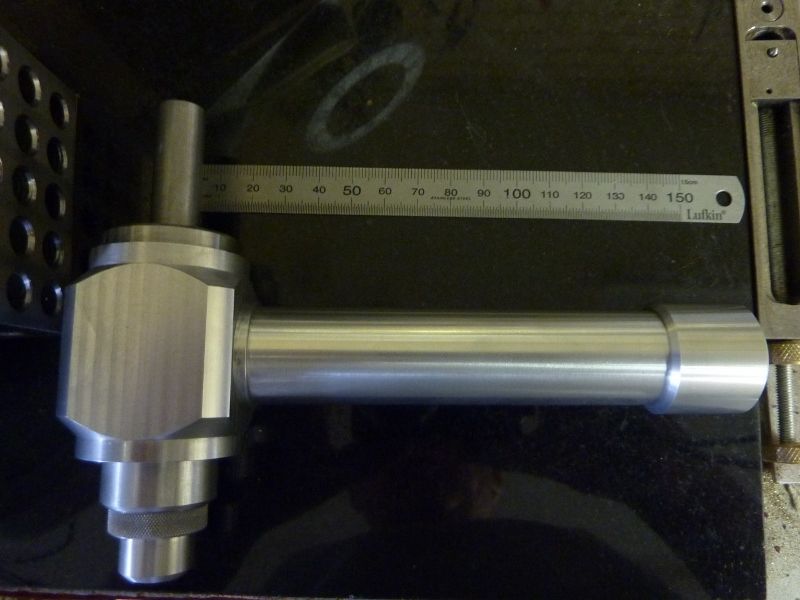Posted by Martin on 12/12/2012 00:45:44:
Is it feasible to anodise the assembled unit and disassemble it after to fit the lens etc?……
Martin,
you might just be able to – but I would strongly advise against it.
Firstly, as well as the lens, you would need to remove any ferrous or other non-aluminium components (I suspect the arbor is steel, plus any ferrous fasteners etc.).
Secondly, with the assembled structure there will be significantly higher risk of carry-over. The anodising process traverses a number of process tanks, and it is absolutely essential that the item is purged off one chemical before it enters the next tank. This is often done by a combination of dipping in / spraying with pure water (reverse osmosis / de-ionised or distilled etc.). Carry-over of chemical from one tank to the next can, in extreme cases, "poison" the following tank, but far more likely is an inferior finish. A little acid carried over into the bulk of the dye tank and affecting the bulk pH will have a slight impact on the dye's performance; far more worrying are small localised amounts. If the workpiece isn't thoughly purged of acid, and a little seeps-out during the dying, you can get symptoms like white whisps or streaks or spots.
Thirdly, it would also be harder to guarantee the readiness and that all the wetted surface area would pass the water break test.
Fourthly, if there are, say, any small aluminium retaining rings or collars, there is a possibility that during the anodising run, if they aren't individually racked then they may loose contact and that component wont anodise properly.
For all the above reasons, when we have camera housings, composite lens mounts etc. to anodise they're always racked as individual items.
Anodising isn't really anything to be scared of if you take your time and common sense precautions.
However, if you take it fast & loose then you can spoil things – e.g. inadequate cleaning resulting in un-anodised patches; or excessive etching beforehand giving a matt surface; or anodising too cold and build up a hard layer that won't take dye; or anodising too warm so you get dissolution and a chalky finish; or touching the item part-way through and getting fingerprints; etc. etc.
I think you're right to be scared of, say, the battery-charger/"let her rip" approach which may give variable/dis-appointing results.
BUT if the item is well made, properly prepared and anodised carefully the impact on the dimensions will be minimal and I really doubt you'll have significant issues.
Dave
Edited By Dave Martin on 12/12/2012 14:43:13
KWIL.






